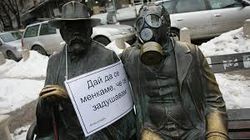ISSS608 2018-19 T1 Assign Stanley Alexander Dion Conclusion
Revision as of 23:48, 18 November 2018 by Sadion.2017 (talk | contribs)
|
|
|
|
|
|
Concluding Remarks
To summarise the insights retrieved from each of the tasks, I would like to mention 3 key important points:
- The pollution concentration across the city has moved to a new location from the past 5 years. Initially, the pollution was concentrated along Orlov Most and Hipodruma, both of which are the located in the central part of Sofia. The concentration is moved to the north-west part of Sofia if we look at the recent observations. The proof on this is the ever-increasing pollution spotted in Nadezhda during recent observations.
- The sensors deployed by citizen science data can be clustered together to reveal spatio-temporal pattern hidden between the dataset. We discovered that different clusters of sensors have different own active times and covered different part of Sofia city. By getting the set of different sensor readings and characteristics and yet capturing the set of sensors breakdown, we could easily get the potential locations of the pollution or even help the science community to reduce their maintenance cost by deploying more attention to the area where sensors are likely to break down.
- To understand underlying relationship between spatio-temporal dataset, we should use pattern finding algorithm that works on localised parameter estimates such as GWR. By employing GWR I can find the potential source of transboundary pollution, which is Republica Power Stations, by inferring different factor such as spatial correlation of pollution concentration with wind speed and topology of the Sofia city. We also come out that the pollution from the power station is blown circling the mountains and get into the city through the mountains cut by the highway.
From this assignment, I learnt that visual analytics is much beyond drawing charts and bar. It is about understanding the business problem and implementing various analytics techniques that will help us visualise and find patterns within the data.
Acknowledgement
Thanks for Dr. Kam Tin Seong for giving me the oppportunity to solve a full-fledged real analytics case study :)
